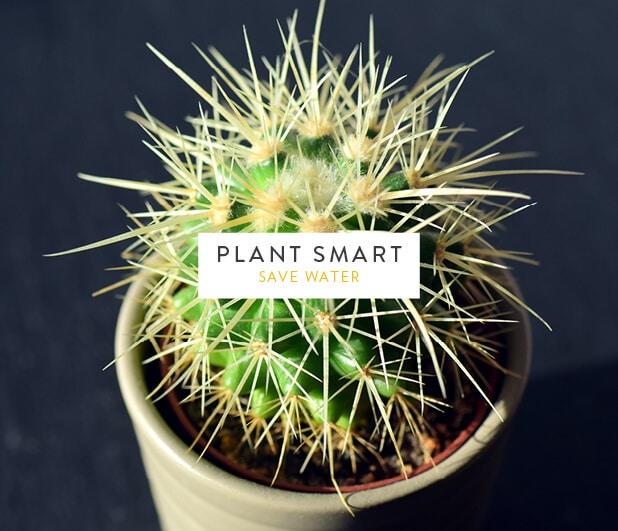Plant smart: Save water
DIY and how-to

Many gardeners believe that water restrictions mean one of two options: either leave your garden to
die, or spend hours watering all your plants by hand. But if you’re smart, you can still enjoy your garden and not waste our most precious resource thanks to the large variety of waterwise plants that are available. In nature, drought conditions are common and so certain plants have adapted to grow and thrive without a lot of water. And no, that doesn’t only include cacti and succulents, but many beautiful flowering varieties that are simply waterwise alternatives to everyday plants.
Not sure how to tell if a plant is waterwise or not? Here’s what to look out for:
Small or needle-like leaves
The smaller the surface area of the leaf, the less water is lost due to evaporation. Examples include
ericas, acacias, rosemary, origanum and thyme.
Reduced number or leaves/closing leaves
Certain plants shed leaves or have leaves that fold closed to reduce moisture loss. These plants close
their leaves to reduce the amount of leaf exposed to direct sunlight. Examples include Karee tree,
acacias and buffalo thorn.
Grey foliage
The colour grey reflects the sun’s rays away from the plant, thereby keeping it cooler and reducing
moisture loss. Examples: lavender, artemesia and arctotis.
Hairy leaves
The function of hair on the leaves is to slow down air movement past the leaves and thereby reduce
water loss. Examples: silver tree, lamb’s ear, beach salvia and helichrysum.
Leaves that are lighter underneath
When these plants become water-stressed, they turn the lighter side of the leaves upwards to reflect
the sun away. Examples: wild olive, gazania and indigenous buddlejas.
OTHER IDEAS:
Smart Water
If you have the space, install a tank to catch rain water, connect a grey water system to your bath and shower outlets and use a watering can to hand water sparingly. Only water on still, wind-free mornings (to reduce evaporation) and direct water directly to the plant roots. Monitor water usage at all times.
Group ‘em!
Group plants with similar watering needs together. Create a hydrozone , where all of the plants have similar watering needs so you water more efficiently.
Mulch mulch mulch
Mulch regularly to reduce water evaporation, prevent weeds and moderate soil temperatures. For the best results, use a 2 to 3 inch layer of mulch in plant beds and around trees and shrubs. We love organic Rooibos mulch, now availabe in 15dm bags on our online store!
Salvage lawn spots
Plant drought-resistant grass types like bermuda and buffalo grass, which use 20% less water than other types.
Local is lekker
Native plants that are well-established are the better choice for your landscape because they don’t
require a lot of watering. They are also generally resistant to pests and diseases in the area and don’t need a lot of fertiliser.
Feel free to pop in to any of our garden centres and speak to our horticulturists about what species to consider. Find us here.
You might also like
Shop online
-
- Sale!
CHIHUAHUA JUNIOR 1.5KG
- Original price was: R314.99.R251.99Current price is: R251.99.
- Add to cart Learn More
-
PURE LAWN 100ML
- R99.99
- Add to cart Learn More
-
- Sale!
OUTDOOR 2KG OR 4KG
- R367.99 – R631.19
- Select options This product has multiple variants. The options may be chosen on the product page Learn More




